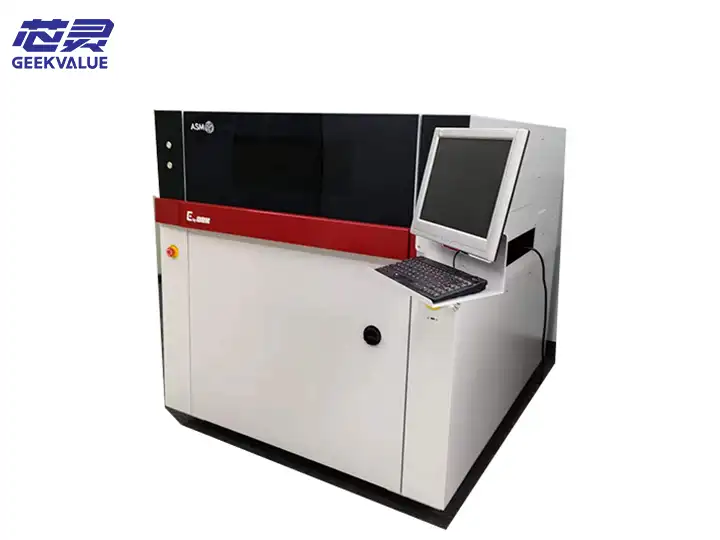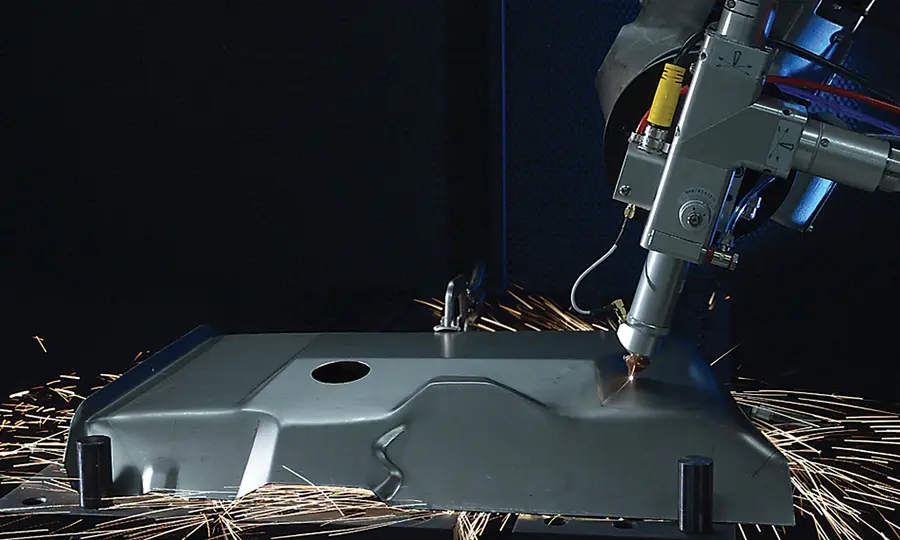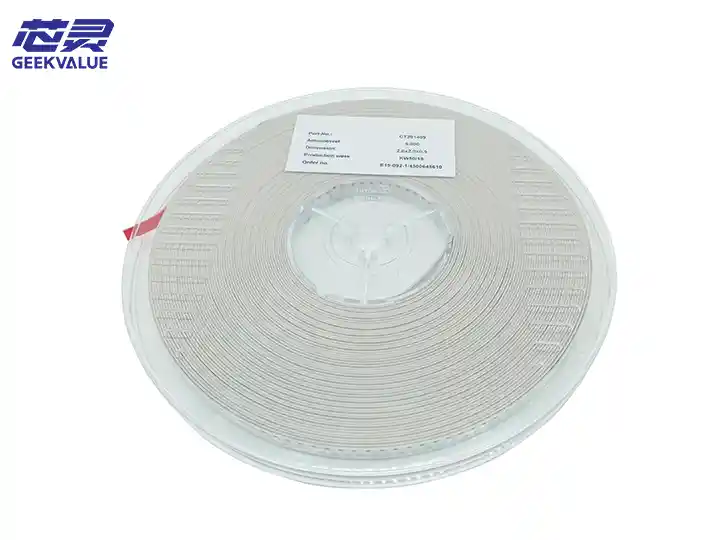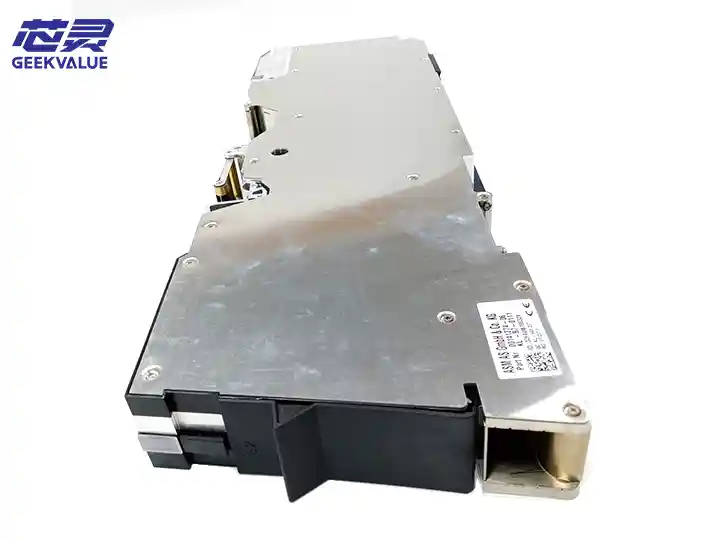DEK E por DEK haꞌehína peteĩ generación pyahu impresora pasta de soldadura de alta precisión totalmente automática omoñepyrũva ASM Assembly Systems (yma DEK). Ojejapo línea de producción SMT (tecnología de montaje superficial) moderno-pe g̃uarã ha oĩ porã impresión pasta de soldadura precisión-pe g̃uarã umi PCB de alta densidad (haꞌeháicha placa base teléfono móvil, electrónica automotriz ha módulo 5G). Ko modelo oñemboheko porãve DEK TQL rehe, omeꞌeva pyaꞌeve, hekopete ha tembiaporã iñaranduvéva ombohovái hag̃ua Industria 4.0 remikotevẽ.
2. Principio de trabajo rehegua
PCB ñembohasa ha ñemohenda
PCB oike posición de impresión-pe pista de transmisión rupive, ojefija mecanismo de sujeción rupive, ha cámara CCD alta resolución ohechakuaa punto Marca alineación precisa-pe guarã.
Enlace malla de acero rehegua
Pe malla de acero ha PCB oñembojoaju adsorción de vacío térã abrazadera mecánica rupive ani haguã oî brecha (clave ohypýi haguã calidad de impresión).
Impresión pasta de soldadura rehegua
Pe raspador (metal térã poliuretano) oempuja pe pasta de soldadura peteĩ presión, ángulo ha velocidad oje’évape, ha osẽ pe apertura malla de acero rupive pe almohadilla PCB-pe.
Desmoldeo ha detección rehegua
Pe malla de acero ojeipe’a PCB-gui (pe velocidad de desmoldeo ha’e ajustable), ha oĩ modelo ikatúva oñembosako’i SPI 3D (detección de pasta de soldadura) reheve ojesareko haĝua calidad de impresión rehe en tiempo real.
III. Ventajas Básicas rehegua
Ventajas rehegua Ñemombe’u
Ultra-alta precisión ±15μm impresión precisión (Cpk≥1.33), oipytyvõ 01005 componente ha 0,3mm pitch BGA.
Producción velocidad yvate 400mm/s peve impresión velocidad, tiempo de cambio de línea <3 minutos, omoporãve UPH (producción unidad aravo rehegua).
Control inteligente bucle cerrado Ajuste tiempo real presión raspador ha velocidad desmoldeo oasegura haguã consistencia.
Diseño modular Ikatu oñemyengovia pyaꞌe umi raspador, sistema visual ha módulo ñemopotĩ rehegua oñemboguejy hag̃ua tiempo de inactividad.
Industria 4.0 ojogueraháva Oipytyvõ MES/ERP docking ojehupyty hag̃ua datokuéra rastreabilidad ha monitoreo mombyry guive.
4. Especificaciones clave rehegua
Parámetro rehegua Especificaciones
PCB tuichakue máximo 510 × 460 mm
Impresión exactitud ±15μm (umi modelo SPI 3D ikatu ohupyty ±10μm)
Impresión velocidad 50–400 mm/s (programable) .
Raspador presión rango 5–30 kg (retroalimentación presión inteligente) .
Plantilla grueso soporte 0,1–0,3 mm
Velocidad de demoldeo 0,1–5 mm/s (ojereguáva) .
Poder oñeikotevẽva 220VAC/50-60Hz, 2.0kW
Presión fuente de aire rehegua 0,5–0,7 MPa
5. Umi mba’e iñimportantevéva
1. Sistema raspador arandu
Control de presión adaptativa: Oñemohenda automáticamente presión raspador según tensión malla de acero ani haguã fuga pasta de soldadura térã insuficiente soldadura.
Diseño raspador doble: Oipytyvõ impresión peteĩ tape/mokõi tape ombohovái hag̃ua iñambuéva proceso mbaꞌe ojejeruréva.
2. Alineación visual avanzada rehegua
Cámara CCD nivel 10μm: Oipytyvõ alineación precisa PCB ha malla de acero rehegua, ha ikatu gueteri ojekuaa jepémo oñecontamina michĩmi pe punto de marca.
Integración SPI 3D (opcional): Detección tiempo real-pe pasta de soldadura grueso ha volumen rehegua ani haguã umi producto defectuoso osyry proceso de parche-pe.
3. Totalmente automático malla de acero ñemopotî
Ñemopotî heta modo rehegua: toalla seco, toalla húmeda, combinación adsorción al vacío oñemboguejy hagua residuo pasta de soldadura rehegua (ikatúva oñemohenda oñemopotî hagua ijeheguiete opaite N impresión rire).
4. Diseño ojeporúva
Pantalla táctil HMI: Interfaz operación gráfica, oipytyvõ peteĩ clic receta ñehenói.
Línea ñemoambue pyaꞌe: PCB tuichakue ñembohasa oñemboheko ijeheguiete oñemboguejy hag̃ua yvypóra jejavy.
VI. Tembiaporã ha tembiaporã
1. Funciones centrales rehegua
Impresión pasta de soldadura de alta precisión: Ojeasegura confiabilidad soldadura rehegua umi componente tono fino rehegua.
Proceso optimización iñaranduva: Ojehai ijeheguiete umi parámetro impresión rehegua ha oñemboheko umi ñemboheko iporãvéva algoritmos AI rupive.
Defecto jehapejoko: 3D SPI retroalimentación tiempo real-pe oñemboguejy hag̃ua tasa de retrabajo.
2. Rol línea de producción SMT-pe
Oñemoporãve rendimiento: Oñemboguejy umi defecto soldadura rehegua ha eháicha soldadura ro ysã ha puente.
Oñemboguejy umi costo: Oñemboguejy umi residuo pasta de soldadura rehegua ha oñemboguejy tekotevẽha ojejapo intervención manual.
Producción flexible: Ojeadapta umi pedido multivariedad, lote michĩvape (ha’eháicha umi electrónica automotriz personalizada oikotevẽva).
VII. Ñañangareko hagua ojeporu hagua
1. Tekoha ha ñemohenda
Control temperatura ha humedad rehegua: 23±3°C, 40-60%RH, ani hagua ojeseca pasta de soldadura.
Estabilidad fuente de aire rehegua: Pe presión aire rehegua tekotevẽ oñemohenda 0,5–0,7MPa-pe, ha umi fluctuación omoheñóita impresión desigual.
2. Especificaciones operación rehegua
Pasta de soldadura jeporu: Oñemohe’ẽ jey 4 aravo + oñembopupu 3 minuto ani haguã aglomeración.
Mantenimiento malla de acero rehegua: Jajesareko pe tensión rehe ára ha ára (≥35N/cm2) ha ñamopotῖ jepi umi apertura.
Mantenimiento raspador rehegua: Oñemyengovia umi raspador metálico cada 3 meses, ha ojehecha umi raspador poliuretano rehegua ojedesgastapa káda semana.
3. Proceso optimización rehegua
Velocidad de demoldeo: oñemboheko 0,3–1mm/s, pyaꞌeeterei ha ndahasýi ojeipeꞌa hag̃ua pe punta.
Ángulo raspador rehegua: jepivegua 45–60°, michĩeterei peteĩ ángulo ohupyty lata.
8. Umi jejavy ha solución ojehechavéva
1. Jejavy: Visión alineación ndoikói
Umi mba’e ikatúva omoñepyrũ:
Marca punto contaminación térã reflexión insuficiente.
Lente cámara rehegua iky’a térã pe fuente de luz ndaha’éi normal.
Myatyrõ:
Emopotĩ pe punto PCB Mark ha emohenda pe fuente de luz resape.
Ecalibra jey pe enfoque cámara rehegua.
2. Jejavy: Ojejavy Presión Squeegee rehegua
Umi mba’e ikatúva omoñepyrũ:
Falla sensor squeegee rehegua térã deformación raspador rehegua.
Insuficiente presión de aire omoheñói fluctuación presión rehegua.
Myatyrõ:
Ojecalibra pe sensor de presión rehegua.
Ejesareko pe aire rape rehe ha emyengovia pe raspador ojedesgastáva.
3. Jejavy: Falta de Abrazadera Plantilla rehegua
Umi mba’e ikatúva omoñepyrũ:
Pe plantilla noñemoĩporãi térã pe cilindro de sujeción oĩ vai.
Myatyrõ:
Ekarga jey pe plantilla ha ehecha pe mecanismo de sujeción.
Oñemopotî ha ojelubrica umi riel cilindro rehegua.
4. Jejavy: Sistema Neumático Jejavy (sistema neumático rembiapo vai) .
Umi mba’e ikatúva omoñepyrũ:
Insuficiente presión fuente de aire térã fuga tubo de aire.
Myatyrõ:
Ojesareko presión osëva compresor de aire rehegua (≥0,5MPa).
Ojesareko pe interfaz tubo de aire rehegua oîpa fuga.
IX. Umi recomendación mantenimiento rehegua
Mba’e mantenimiento rehegua Frecuencia Operación contenido rehegua
Pista ñemopotî Ára ha ára Ojejohéi pista peteî paño ndorekóiva yvytimbo ani haguã oî residuo pasta de soldadura.
Detección de tensión plantilla rehegua Semanalmente Ojepuru petet medidor de tensión oñemedi ha ojeasegura hagua ≥35N/cm2.
Raspador jesareko Mensualmente Ojehechápa ojedesgasta ha oñemyengovia tekotevẽramo.
Calibración sistema visual rehegua Trimestral Eipuru peteĩ tablero de calibración estándar emohenda hag̃ua umi parámetro cámara rehegua.
Drenaje filtro de aire rehegua Mensualmente Ojejoko ani hagua oike humedad umi componente neumático-pe.
X. Ñembohysýi
DEK E por DEK haꞌehína peteĩ jeporavo iporãvéva umi línea de producción SMT de gama alta-pe g̃uarã orekóva precisión ultra-alta, control inteligente ha compatibilidad Industria 4.0 rehegua. Operación estandarizada rupive, mantenimiento preventivo ha solución de problemas pyaꞌe rupive, ikatu oñembotuichave equipo eficiencia ha rendimiento impresión rehegua. Umi falla compleja-pe g̃uarã (haꞌeháicha umi error sistema servo rehegua), oñemboheko oñecontacta hag̃ua soporte técnico oficial ASM-pe térã ojeporu repuesto original oñemyatyrõ hag̃ua.








